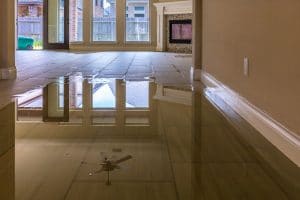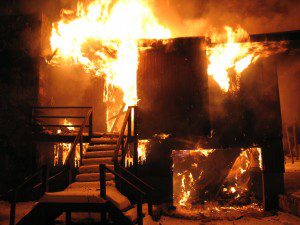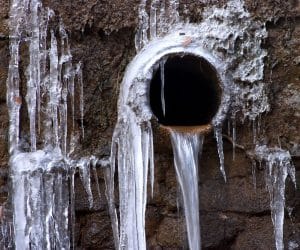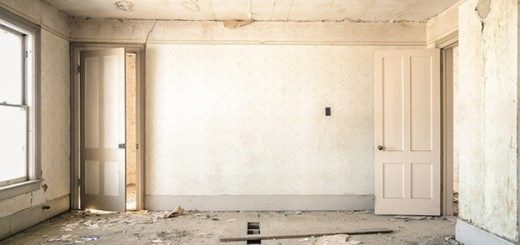Emergency Disaster Restoration Tips
If your home sustains damage from a disaster, such as a flood or fire, it is tempting to try to restore all your personal belongings to their original condition and quickly return to normal. However, there are certain steps that you should take to properly recover material and to stay safe during a natural disaster.
Water Damage
Water damage is a relatively common form of natural disaster. It can have a variety of sources, such as burst pipes, poor drainage, floodingFlooding is the overflow or accumulation of water in areas t... More, leaks, and more. The best way to recover your home and possessions from water damage is to call a water mitigation professional. But if you prefer to do things yourself, here are some things you can do instead:
- Allow your home and possessions to dry out after the initial water damage
- Use a wet or dry shop vac to vacuum standing water and only if an electrician has confirmed the electricity is safe to use
- Remove standing water from flat surfaces by blotting it with a towel
- Open your doors, windows, closets, drawers, and cabinets for air circulation
- Keep drapes off the wet floor and leave the air conditioning on
- Put wet books and documents in the freezer to prevent moldMold is a type of fungus that grows in damp or humid conditi... More and mildewMildew is a type of fungus that grows on damp surfaces, typi... More growth
- Wear appropriate clothing and safety gear while attempting to recover belongings
- Make sure the electricity is off before entering rooms with standing water
- Clear the floor of water and moisture before using any appliances.
It is best to consult a water damage restoration professional about if your house is safe to occupy and what activities are safe to perform. For example, wet objects and materials are heavy, so only carry what you can handle.
Fire Damage
 Fires are one of the most dangerous natural disasters. They can quickly spread and threaten the lives of residents and emergency responders. It’s easy to picture the worst when you experience fire damage, but fires that are put out before they spread to the entire house often cause minimal damage. Multiple rooms may be passable or undamaged completely.
Fires are one of the most dangerous natural disasters. They can quickly spread and threaten the lives of residents and emergency responders. It’s easy to picture the worst when you experience fire damage, but fires that are put out before they spread to the entire house often cause minimal damage. Multiple rooms may be passable or undamaged completely.
Have the fire department or a fire damage restoration professional inspect your home for structural damage before you enter the home. If your property is indeed safe, and you want to restore your belongings yourself, begin by inspecting them thoroughly. You should clean dishes, silverware, clothing, carpeting, and furniture thoroughly before reuse.
Wear safety gear like long sleeves, pants, gloves, a mask, and safety glasses during the inspectionInspection is the careful examination and assessment of a pr... More process. Don’t attempt to clean ceilings, walls, carpet, upholstery, and other surfaces yourself. Also, don’t turn on any appliances or electronics until a professional can inspect them.
Mold Damage
Water damage is the main source of moldMold is a type of fungus that grows in damp or humid conditi... More growth in homes and businesses. MoldMold is a type of fungus that grows in damp or humid conditi... More growth is a serious issue for homeowners because it can cause structural damage to the building and trigger serious health issues. The biggest indicators of moldMold is a type of fungus that grows in damp or humid conditi... More present on your property is excessive humidityHumidity is the amount of moisture or water vapor present in... More, unpleasant odors, previous water damage, and visible moldMold is a type of fungus that grows in damp or humid conditi... More.
MoldMold is a type of fungus that grows in damp or humid conditi... More sporesSpores are microscopic reproductive units of fungi or mold t... More can be easily disturbed and spread throughout the home. That’s why there is no safe way for a homeowner to remove moldMold is a type of fungus that grows in damp or humid conditi... More without proper attire and training. The best way to remove moldMold is a type of fungus that grows in damp or humid conditi... More is to identify its presence in your home and call a mold remediation professional to remove it.
SewageSewage is wastewater containing biological and chemical cont... More and Flood Damage
FloodingFlooding is the overflow or accumulation of water in areas t... More is the leading cause of property damage in America, but unfortunately, many homeowners don’t have flood insurance. Water damage, contaminationContamination is the presence of harmful or unwanted substan... More, and the introduction of sewageSewage is wastewater containing biological and chemical cont... More to your property make floods so damaging to homes. Throw away any item that encounters sewageSewage is wastewater containing biological and chemical cont... More. Otherwise, you could risk exposure to the parasitic, bacterial, and viral diseases that are associated with sewageSewage is wastewater containing biological and chemical cont... More.
Keep pets and kids away from the contaminated areas or the entire property until the remediation process is complete. It is important to keep damp areas dry for 48 hours after the initial water damage to prevent moldMold is a type of fungus that grows in damp or humid conditi... More growth. Do not attempt to use your own products or sprays to clean the contaminated areas. Doing so will likely harm the property rather than help.
Your best course of action is to call a professional to remove flood and sewage, but there are certain things you can do to alleviate the damage before the remediation process begins:
- Blot and mop excess water
- Turn on your air conditioning for maximum dryingDrying is the process of removing moisture from materials, s... More
- Remove valuable objects and personal belongings to a safe place.
Contact Us
When your property sustains damage from a natural disaster, there are several things you can do to prepare for emergency restorationRestoration is the process of returning a property to its pr... More. First, if you feel overwhelmed, call a disaster restoration professional, even if you just want advice about properly restoring your personal belongings. Such companies will provide emergency water repair and disaster restoration services to buildings affected by water damage, fire damage, moldMold is a type of fungus that grows in damp or humid conditi... More growth, and sewageSewage is wastewater containing biological and chemical cont... More.












